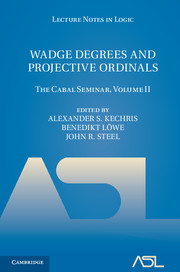Referencing. References are by chapter, section and subsection: i.j.k refers to subsection k of section j in chapter i. Theorems and the like are referred to, not by number, but by their names or the number of the subsection they appear in. Equations are numbered within a chapter where necessary; reference to equation n in section j is in the form “(j.n)”.
Mathematical notation. Definitional equivalence or equality (according to context) is written ≔. Application of terms is left associative, and lambda abstraction binds stronger than application. For example, MNK means (MN)K and not M(NK), and λxMN means (λxM)N, not λx(MN). We also sometimes save on parentheses by writing, e.g., Rxyz, Rt0t1t2 instead of R(x, y, z), R(t0, t1, t2), where R is some predicate symbol. Similarly for a unary function symbol with a (typographically) simple argument, we write fx for f(x), etc. In this case no confusion will arise. But readability requires that we write in full R(fx, gy, hz), instead of Rfxgyhz. Binary function and relation symbols are usually written in infix notation, e.g., x + y instead of +(x, y), and x < y instead of <(x, y). We write t ≠ s for ¬(t = s) and t ≮ s for ¬(t < s).
Logical formulas. We use the notation →, ∧, ∨, ⊥, ¬A, ∀xA, ∃xA, where ⊥ means logical falsity and negation is defined (most of the time) by¬A ≔ A→⊥.
